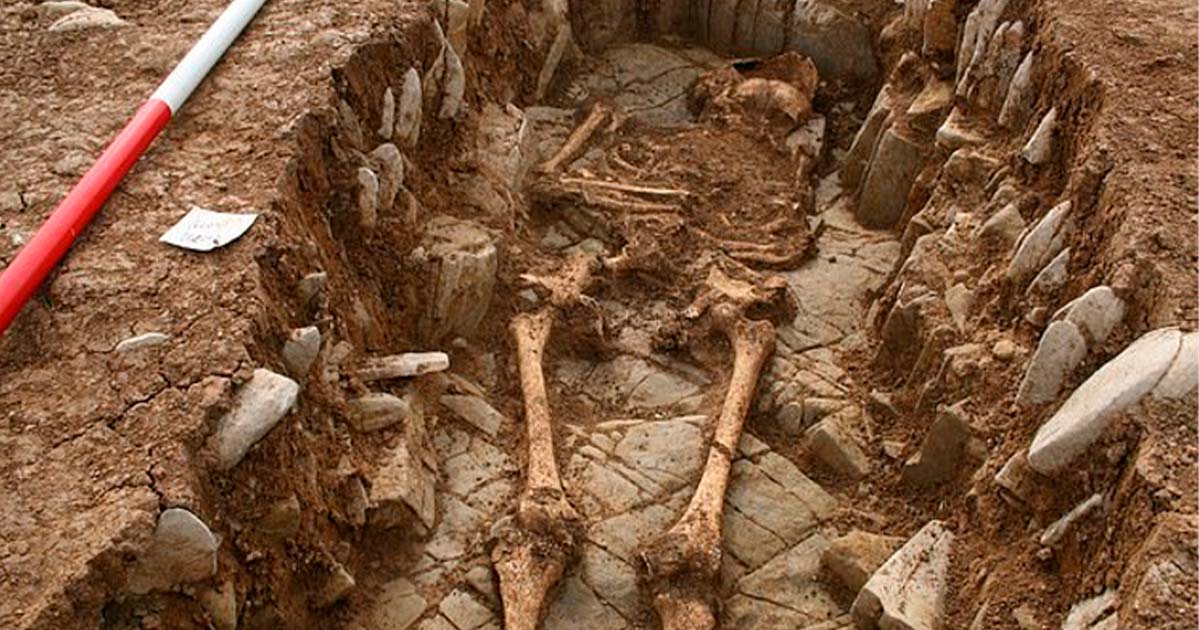Bizarrely Positioned Burials Uncovered In Early Medieval Cemetery, Wales
Archaeologists in Wales have uncovered an early medieval cemetery, dating back to the 6th or 7th century. So far, 18 out of an estimated 70 graves have been excavated, revealing remarkably well-preserved skeletons.
Located in a nondescript field within Fonmon Castle's grounds, near Cardiff airport, the cemetery has been the focus of two summer excavations. Teams from the University of Reading, led by osteoarchaeologist, Summer Courts, have carefully uncovered graves embedded in bedrock. The unearthed skeletons are approximately 1,500 years old and are surprisingly intact.
Unusual Burial Practices and Artifacts Unearthed
What's particularly intriguing about this discovery is the variety of burial positions and the artifacts found with the bodies. Some skeletons are positioned traditionally on their backs, while others are on their sides or crouched with knees against their chests. This diversity raises questions about the burial customs of the period.
- Feudalism and the Medieval Village Hierarchy
- Medieval Sex and Scandal: Consistory Courts and Morality in Medieval England
Dr Andy Seaman, a lecturer in early medieval archaeology at Cardiff University, who is heading the excavation, said: “This is a really exciting discovery. Sites of this date are extremely rare in Wales and often do not preserve bone and artifacts,” the Guardian reports.
“Other similar sites have found bodies in crouched positions such as this, but considering the number of graves we have looked at so far, there seem to be a high proportion. This could be evidence of some sort of burial rite being carried out.”
“It may or may not be significant that thus far all of our crouched burials are female. We’re dealing with small samples so far. What we’ll be doing in the coming years is exploring that further.”
- Medieval Wine ‘Supertanker’ Saved by Community in Wales
- A Truly Historic Rest: 10 Unforgettable Medieval Castle Vacations

A group of archaeologists and students excavating the medieval cemetery at the Fonmon Castle site. (©Andy Seaman)
A Glimpse into Medieval Life
Along with the human remains, the graves have also yielded items that paint a picture of life in the first millennium. Fragments of dishes, cups, and animal bones suggest a community engaged in various activities. A standout find is a small carved peg, possibly used in a gaming.
Dr. Seaman notes that unlike today's graveyards, these sites were central to community life. They were not just for burying the dead but also for social gatherings, including feasting.
Signs of Wealth and Trade
Excitement arose during the dig with the discovery of a glass shard from a vessel, believed to be from the Bordeaux region of France. This, along with other artifacts like North African pottery, indicates the community's high status and access to luxury goods through trade networks.
Further Research and DNA Analysis Awaited
The excavation team, including Tudur Davies from the University of Cardiff, plans to conduct DNA analysis on the bones to learn more about the individuals and the community. While the exact dating and details of the people buried here remain to be fully understood, this cemetery offers a valuable glimpse into a period of history that is still largely enigmatic.
The medieval cemetery dig is featured on Digging for Britain on BBC 2 at 8pm on 4 January.
Top image: One of the medieval skeletons found at the Fonmon Castle site cemetery, Cardiff. Source: ©Andy Seaman
By Gary Manners

















